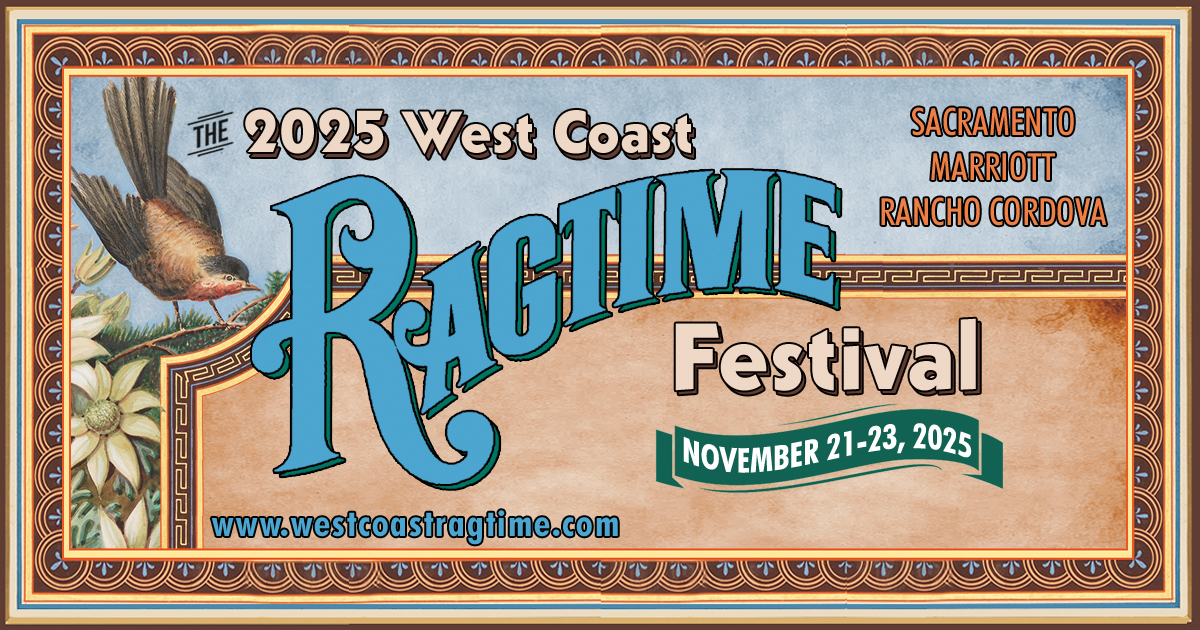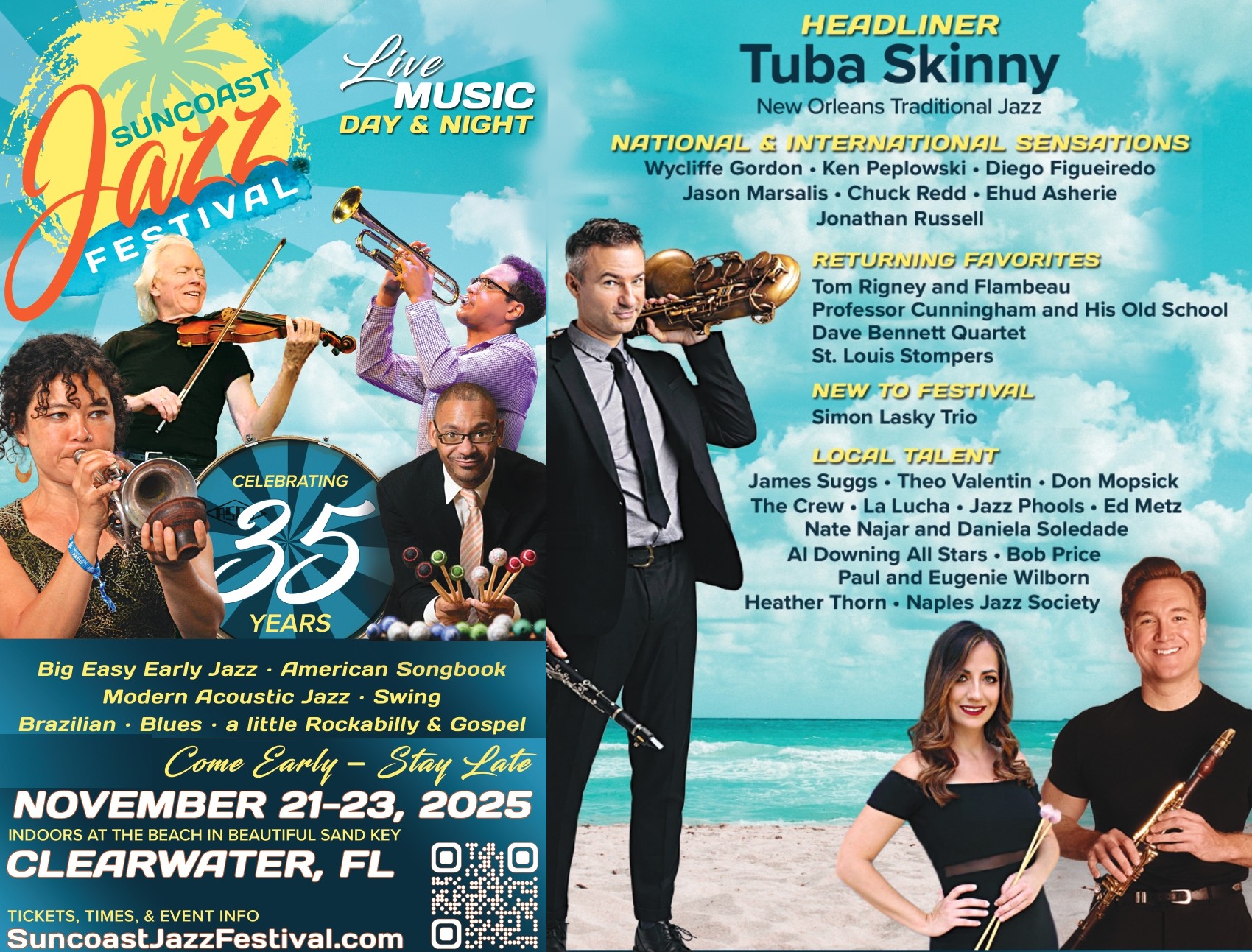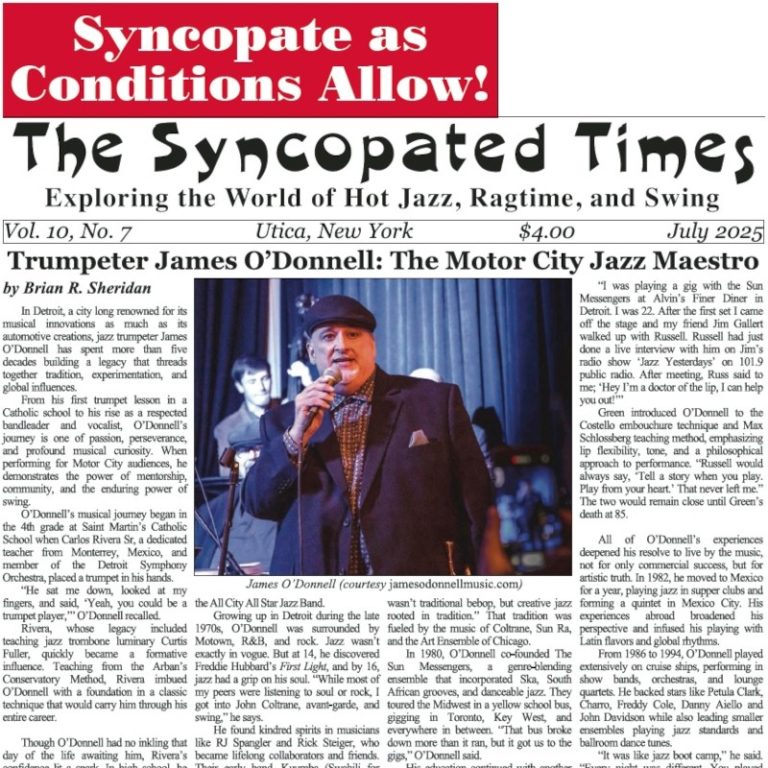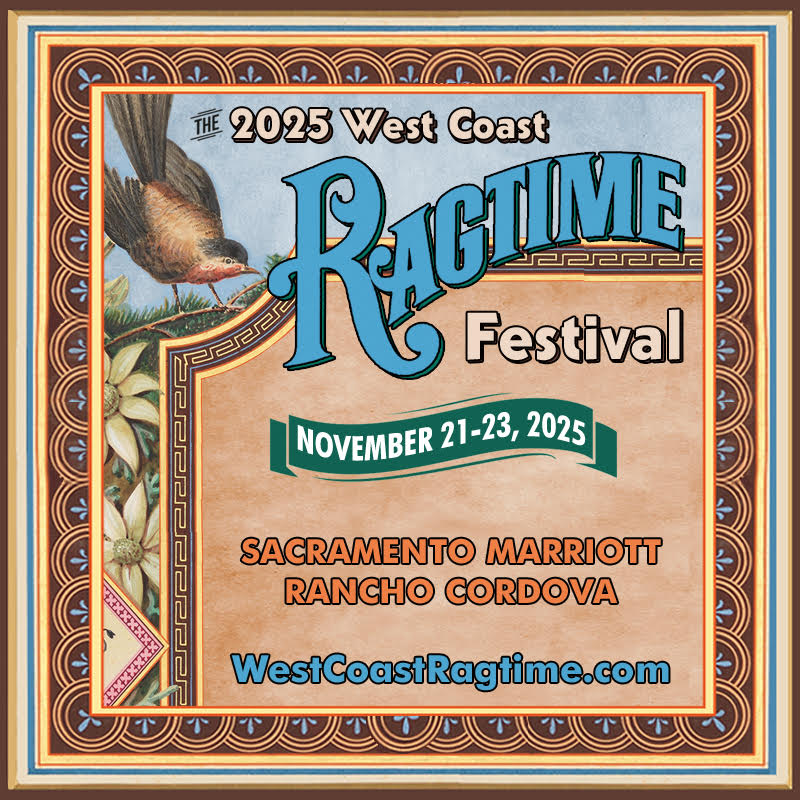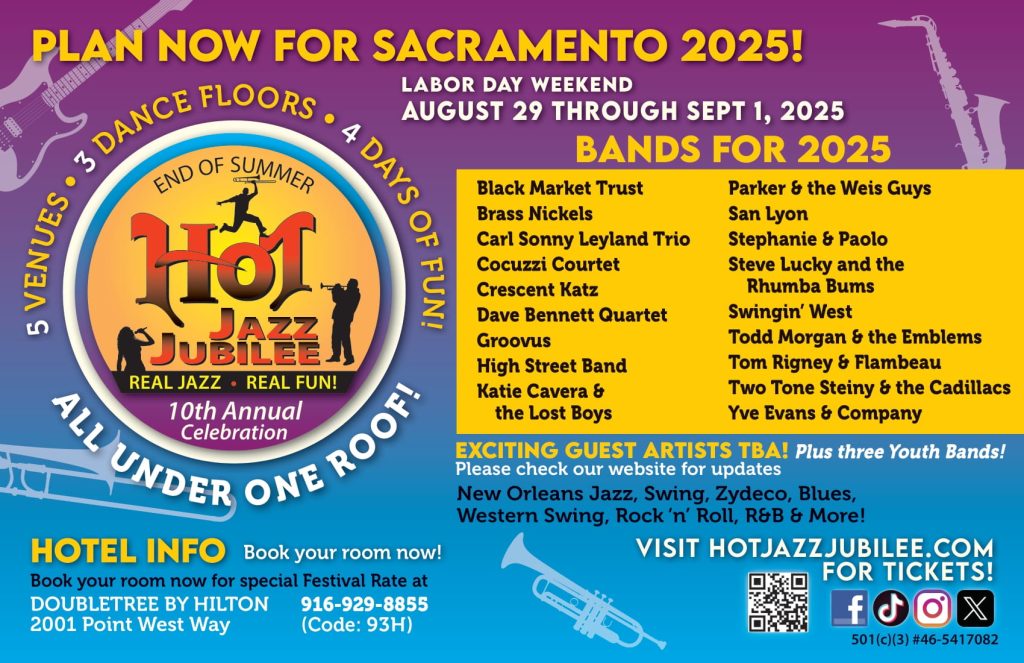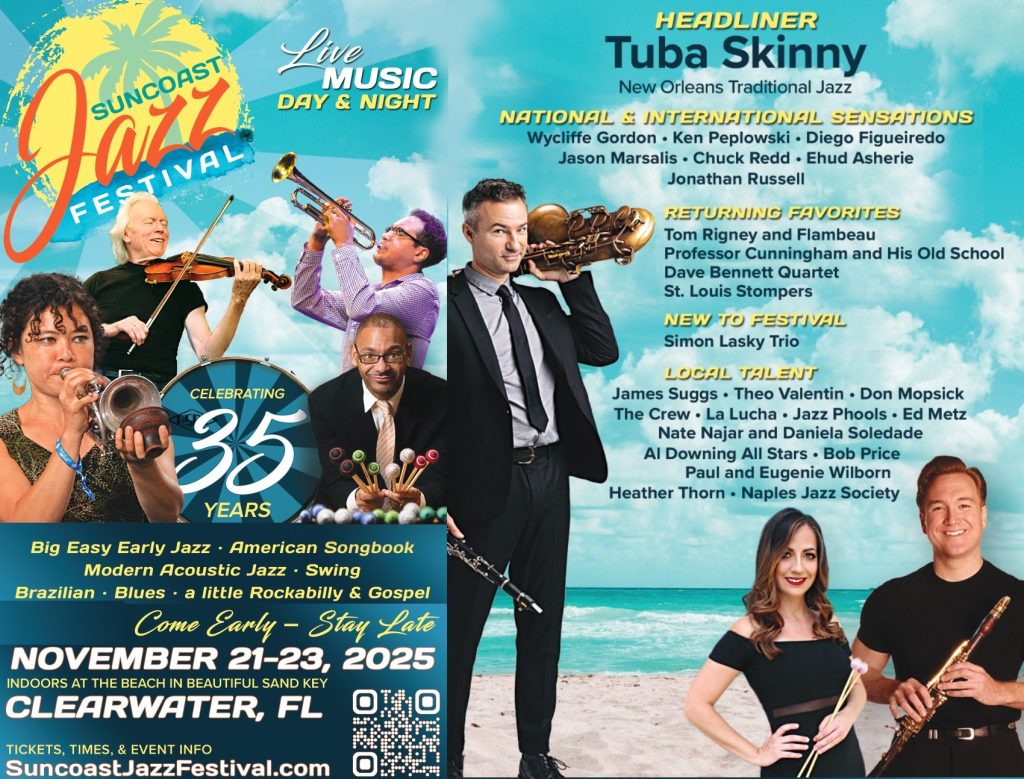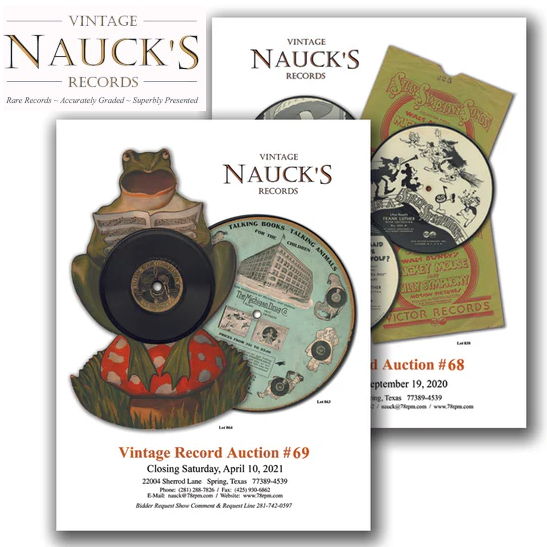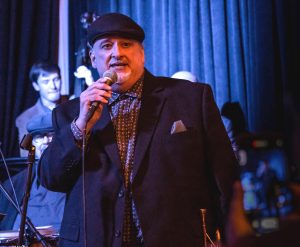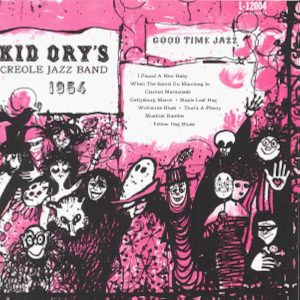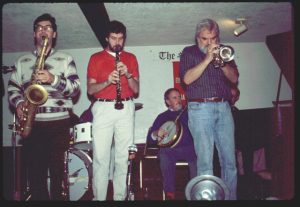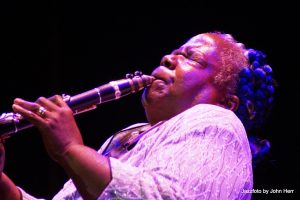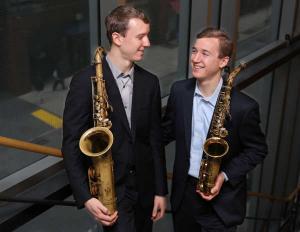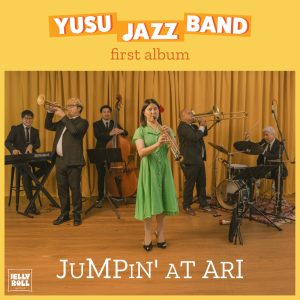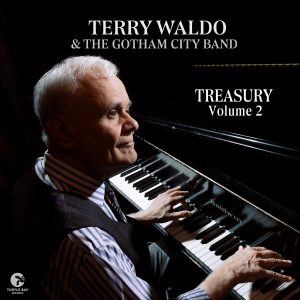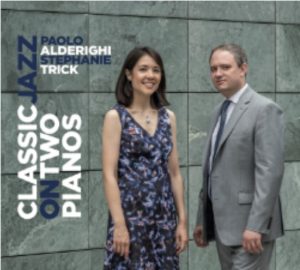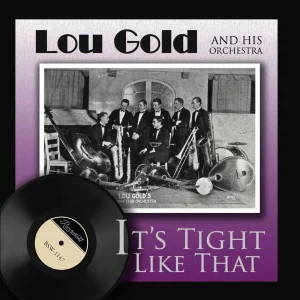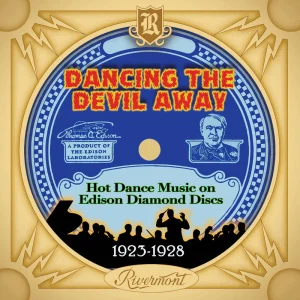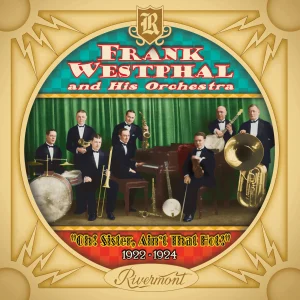For the third, and unfortunately last, time I attended the Arizona Classic Jazz Festival at the Crowne Plaza Resort in Chandler on October 31-November 3. The festival had previously announced that it would be discontinued after its 35th year. It was started in 1990 in Scottsdale and had several locations around Phoenix before moving to the present site in 2004. Interestingly, TST writer Lew Shaw, the last surviving founder, attended on Saturday this year with a group from his retirement community. Lew, who will turn 99 around the time you read this (or even if you don’t read it), is still mentally very acute though he uses a walker now. I was glad for a chance to speak with him.
The reasons for ACJF’s demise are the usual ones that cause festivals to fold: declining attendance, an aging cadre of volunteers to run it and lack of replacements, and sometimes increasing costs for venues and travel for the musicians. I remember a year or two ago asking, separately, the ACJF heads, Helen and Bill Daley, if they had a succession plan for keeping the festival going. Their answers were the same: no.
The performer roster this year was pretty much the same as in my previous visits. One band was dropped for financial reasons, perhaps foretelling the festival’s fate. Those that did appear were: Cheryl’s Vintage Jazz, Groovus, the Holland-Coots Jazz Quintet, the St. Louis Stompers, Sentimental Breeze, Sun City Stomperz, Tom Rigney and Flambeau, We 3+1, Wholly Cats Swing Club, and the Wildcat and Wolverine Jazz Bands. Additional performers were guitarist Howard Alden, who lives in Chandler, and the piano duo of Stephanie Trick and Paolo Alderighi. A slight amendment to the above list: Brian Holland of Holland and Coots was absent due to his stepson’s wedding. Chris Dawson from Los Angeles filled in for him in the quintet as well as with Groovus, which is three-fifths of the Quintet. Chris did a fine job, but I think Brian’s playing style is better suited to these two groups.
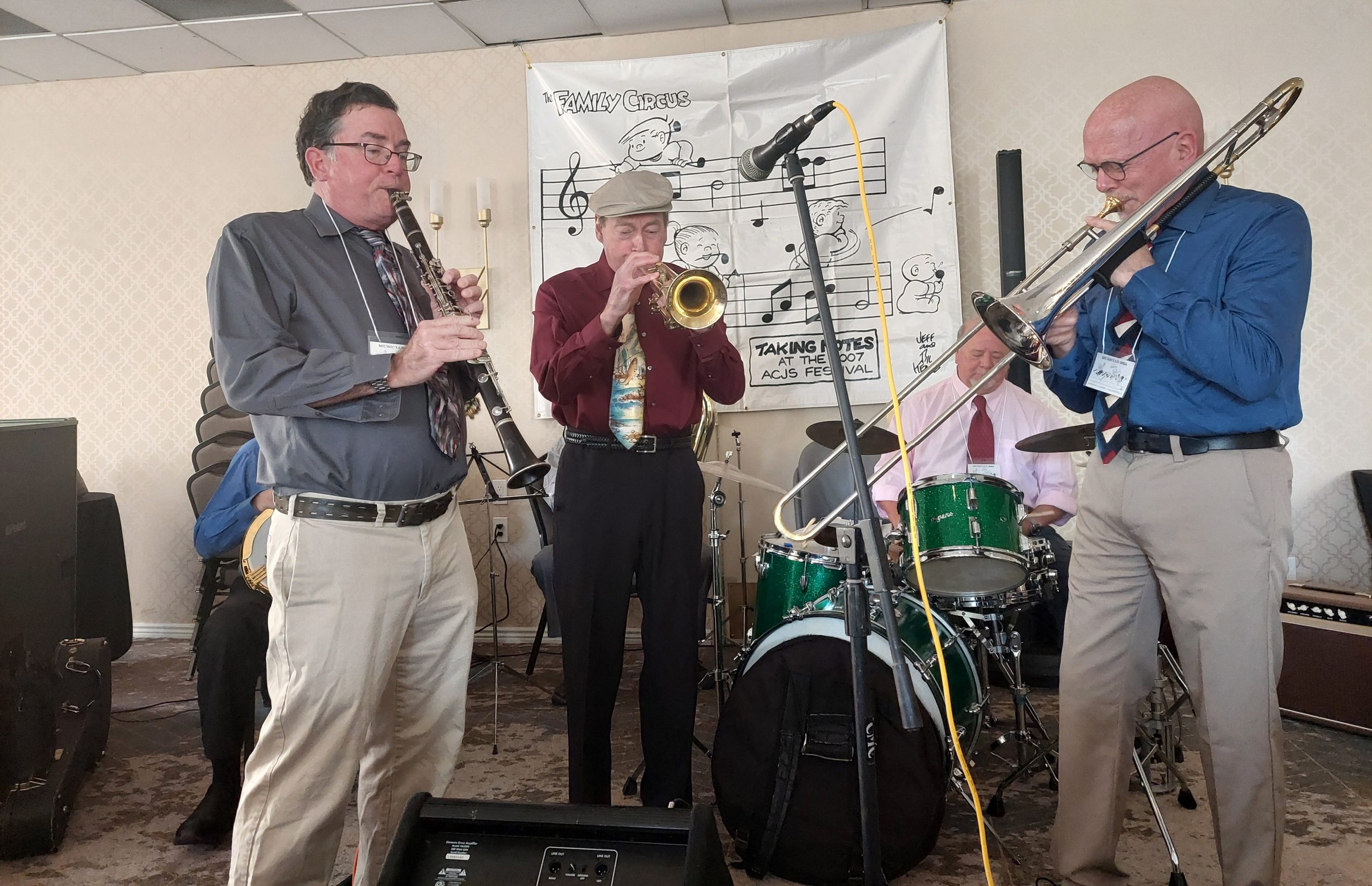
(photo by Shelly Gallichio)
I did not see all the bands this year; I missed Sentimental Breeze, Sun City, and Flambeau. I had seen all of them before, and since this might be my last chance, for a while at least, to see many of my favorites, I opted to spend my time with those. I did catch one new band, Wholly Cats, based in Tucson. This group mostly plays the repertoire of Benny Goodman’s early ’40s small groups. They do a creditable job at it, but I felt the amplified guitar overshadowed the rest of the group. I much prefer acoustic guitar with its deeper and richer sound that intrudes less on the overall band. The late Bob Erdos, founder of Stomp Off Records, once told me that he would not allow amplified guitars on his records. But this was authentic, as Goodman had pioneered Charlie Christian on electric guitar at that time. I should give a shoutout to the Cats’ vocalist, Chelsee Hicks, who fit perfectly and whose singing recalled Peggy Lee. Since this band was playing for the swing dancers, their numbers were short (under three minutes) and had no solos.
Most bands had one themed set. I did not see them all, but these are the ones I did see: Cheryl’s western swing and clarinet trio (Dan Levinson, John Clark and John Otto), “eclectic lite jazz” by the St. Louis Stompers, the Wolverines’ “un-trad variety,” and Stephanie and Paolo with Nicole Pesce. Nicole leads We 3+1 and is a piano powerhouse. Twice during the weekend she played “Rhapsody in Blue:” I heard the abridged version on Friday, but my friend Steve Sanders told me she played the entire piece on Saturday evening. I missed it when she did it last year, so I made it a point not to do so this year, even though there was no guarantee that she’d play it.
The Stompers “eclectic” set was noteworthy for its variety. They opened with Bunny Berigan’s “Chicken and Waffles,” a tune I had never heard despite owning most of Berigan’s records made under his own name. They also included Al Hirt’s ’60s hit “Java,” the Beatles “When I’m 64,” “Alligator Swamp Stomp” by their pianist Dave Majchrzak, and Fred Rose’s ’20s hit “Deep Henderson.” An eclectic set indeed, and very well played. This band is solid.
Danny Coots’ yeoman efforts deserve a mention. In addition to drumming up with Holland-Coots and Groovus, he was part of Cheryl’s Vintage Jazz and did two sets with Stephanie and Paolo, along with bassist Sam Rocha. Danny played in all eight sets on Saturday, two out of four on Thursday and Sunday, and at least six of eight on Friday. Despite this workload, his energy and enthusiasm never flagged.
Although not openly advertised, at least to the attendees, the sets in the San Marcos Ballroom, the largest of the four venues, were heavily populated by swing dancers, especially in the evening. The music went on for them after the scheduled sets ended around 10:15. How long, I do not know, as I was ready for bed.
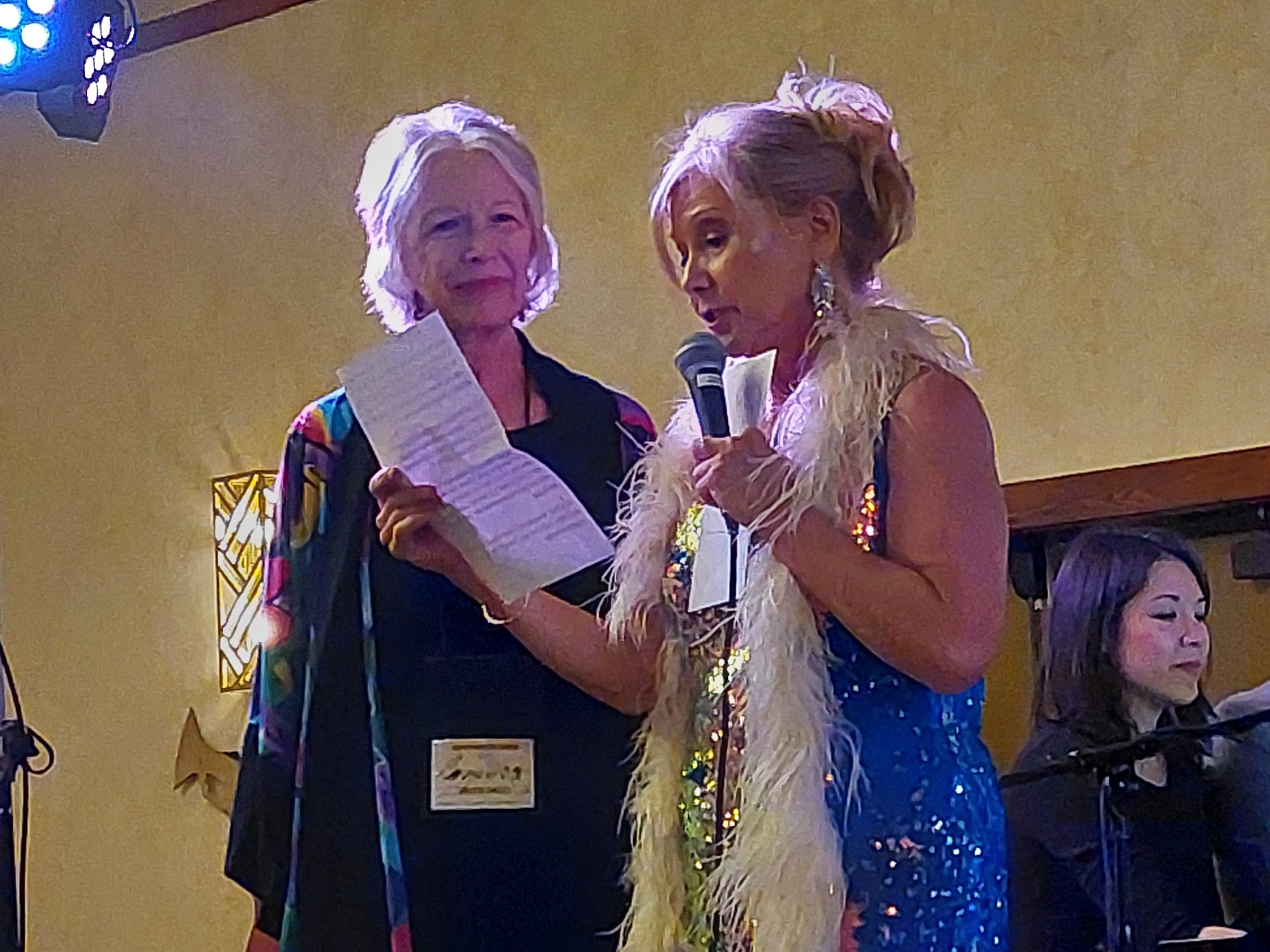
During Stephanie and Paolo’s Saturday evening set, there was a surprise honor for festival president Helen Daley. As they played “Thanks for the Memory,” Helen was given a $10,000 check from one of the festival sponsors. Incidentally, that Robin and Rainger tune is forever associated with Bob Hope and Shirley Ross in The Big Broadcast of 1938. Bob’s son Kelly, who reads this paper, was here again this year, though I don’t know if he was in the audience at that time, and I got to speak with him a couple times. He looked much fitter than last year and walked unaided; last year he had a walker. This was very heartening to me. At the end of their final set on Sunday, S&P played the World War II hit “We’ll Meet Again,” a poignant homage to better times ahead. I am always touched every time I hear it, and have left instructions for it to be played at my funeral, hopefully by some of my favorite musicians—assuming I don’t outlive them; I’m planning to stick around awhile.
In stark contrast, the last set of the weekend, which in previous years had involved all the musicians, this year had a group called the Southwest Surfers, a Beach Boys tribute band. I understand the need for festivals to sometimes stretch the definition of “classic/traditional jazz” in order to attract a younger audience, but why on this occasion? This festival was ending anyway, so why not go out with music more befitting its historic mission? I lasted about 20 minutes. I noticed that the crowd was fairly small, unlike previous finales, so perhaps others felt as I did.
Still, I must pay tribute to Helen and Bill Daley, who have largely carried the festival in its most recent years, as well as the corps of volunteers who made it happen. I enjoyed the three editions I attended and would certainly have come back. My TST colleague Shelley Gallichio was here, and you may also see her perspective in this issue.
Bill Hoffman is a travel writer, an avid jazz fan and a supporter of musicians keeping traditional jazz alive in performance. He is the concert booker for the Tri-State Jazz Society in greater Philadelphia. Bill lives in Lancaster, PA. He is the author of Going Dutch: A Visitors Guide to the Pennsylvania Dutch Country, Unique and Unusual Places in the Mid-Atlantic Region, and The New York Bicycle Touring Guide. Bill lives in Lancaster, PA.


